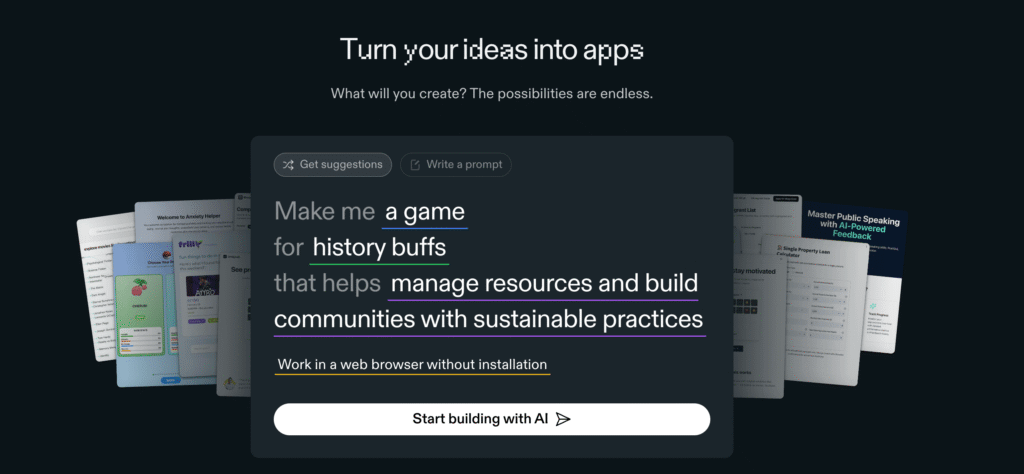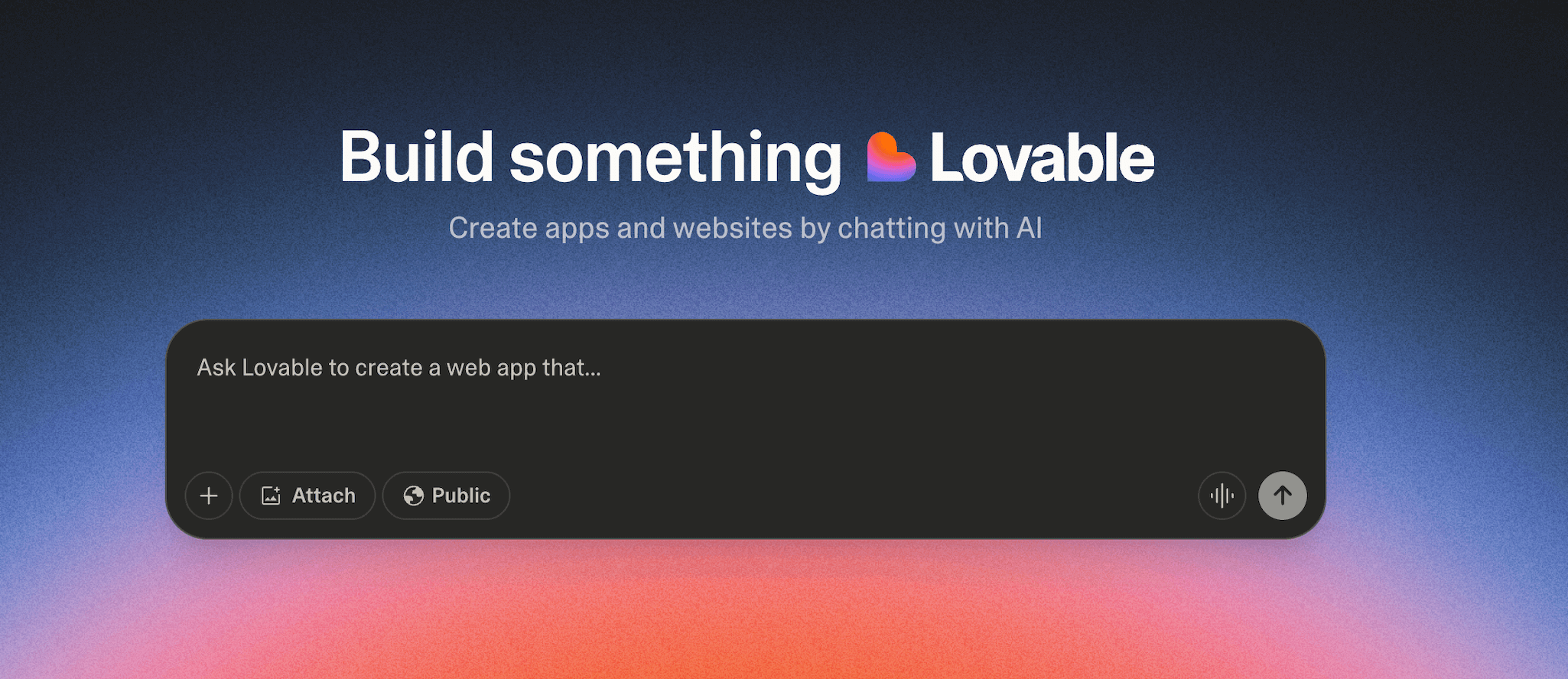Imagine a world where creating software is as simple as writing an email or drafting a social media post. This is not a far-off fantasy but a tangible reality thanks to the revolutionary concept of NoCode. The days of deciphering complex syntax and spending hours debugging intricate lines of code are increasingly behind us.
Instead, tools like Replit, Floot, Lovable, and Bolt.new are transforming the landscape of software development, making it accessible to anyone with a vision. As these platforms evolve, they empower individuals without traditional programming skills to innovate and create, rendering age-old coding practices obsolete.
This shift raises an intriguing question: Is NoCode the future?
With Artificial Intelligence now capable of interpreting human language and executing code, the answer seems to be a resounding yes. Indeed, AI-driven platforms allow users to articulate their needs in plain English, while the system translates these directives into functional applications.
The implications for businesses and creative minds are profound—enabling faster development cycles, reducing costs, and fostering a culture of innovation. For skeptics doubting this seismic shift, spending just 15 minutes on any of these intuitive platforms might be all it takes to witness firsthand the gradual demise of traditional coding.
The Rise of NoCode Platforms

The emergence of NoCode platforms marks a pivotal shift in software development history. No longer confined to a handful of programmers fluent in arcane syntax and intricate frameworks, development is now within reach of entrepreneurs, designers, and visionaries without formal coding backgrounds. The stone age approach of juggling multiple programming languages—each with its own syntax, rules, and quirks—is rapidly fading.
Modern NoCode tools like Bubble and Base44 provide visual interfaces that translate user interactions directly into functional applications. V0 and Bolt.new, for example, allow creators to assemble complex workflows through intuitive drag-and-drop editors, rendering traditional compilers and interpreters almost ceremonial relics of a bygone era.
Is nocode the future? Many early adopters would answer with an emphatic yes. Platforms such as Replit have introduced collaborative, browser-based coding environments where AI copilots can suggest code snippets or execute entire functions based on plain English prompts.
Floot and Lovable go further by offering modular elements—buttons, forms, APIs—that snap together seamlessly, enabling rapid iterations. As these ecosystems expand, integration with third-party services, real-time data processing, and advanced user authentication become accessible with minimal effort. This momentum signals that the days of memorizing endless syntax rules and wrestling with stubborn compilers are behind us, replaced by a more inclusive and efficient paradigm.
Accessibility and Inclusivity in Software Development

NoCode platforms have democratized the software development process, breaking down longstanding barriers to entry. By abstracting away low-level code, they empower individuals from diverse backgrounds—educators, artists, small business owners—to build and deploy applications on par with those crafted by professional developers.
This shift is particularly significant for underrepresented communities and regions with limited access to formal technical education. With templates, tutorials, and community-driven support, anyone can prototype a marketplace, launch a social network, or automate internal workflows without writing a single line of JavaScript or Python.
Inclusivity extends beyond demographics to embrace various learning styles and professional contexts. Visual thinkers benefit from node-based logic flows, while verbal communicators leverage AI-driven natural language interfaces that interpret plain English requests.
This combination fosters a collaborative environment in which teams of non-technical stakeholders and seasoned engineers can contribute equally to product roadmaps. By lowering the technical threshold, NoCode platforms not only accelerate project timelines but also enrich the pool of ideas fueling innovation.
Key Players in the NoCode Revolution
The NoCode ecosystem is flourishing with a variety of specialized tools tailored to different use cases. Replit stands out as a cloud-native development environment enhanced by AI assistants that can generate code, debug errors, and even suggest test cases based on user prompts. Floot offers a flexible visual scripting interface, making it simple to design interactive workflows and data pipelines. Lovable focuses on user-centric experience by providing pre-built UI components that adhere to modern design standards.
Bolt.new brings rapid prototyping to the next level with its real-time deployment capabilities, enabling teams to push updates instantly. V0 delivers a modular architecture designed for building internal dashboards and analytics tools without any back-end setup.
Base44 excels at creating database-driven applications through a unified interface, streamlining data modeling and API generation. Finally, Bubble remains a powerhouse for full-stack NoCode development, combining sophisticated logic workflows with a vast plugin ecosystem. Each platform contributes unique strengths to the burgeoning NoCode landscape, catering to everything from simple one-page sites to enterprise-grade applications.
User Experience and Interface Design in NoCode Tools
User experience lies at the heart of every successful NoCode platform. These tools are engineered to guide users through the development process with minimal friction. Visual editors employ drag-and-drop components, snap-to-grid alignment, and contextual property panels that surface relevant options precisely when they’re needed.
By abstracting complex programming constructs into approachable design patterns, NoCode platforms empower creators to focus on user flows and visual hierarchy rather than worrying about semicolons or import statements.
Template marketplaces and community-driven design libraries further enhance productivity by offering battle-tested layouts and preconfigured modules. Customization remains robust: users can tweak colors, typography, and interactions with a few clicks. Many platforms incorporate real-time previews, allowing instant feedback on design changes.
This seamless interplay between design and functionality blurs the lines between prototyping and production, enabling products to evolve organically based on user insights.
NoCode vs. Traditional Coding: A Comparative Analysis
When comparing NoCode and traditional coding, the most obvious distinction is the barrier to entry. Conventional development demands fluency in programming languages, understanding of development frameworks, and proficiency with version control systems. In contrast, NoCode abstracts these complexities into visual paradigms.
Projects that once took weeks or months to scaffold can now be spun up in hours or even minutes. Maintenance is greatly simplified as well, since updates are applied through unified dashboards rather than dispersed codebases.
However, traditional coding maintains advantages in performance optimization, low-level hardware access, and extreme customization. Mission-critical applications requiring real-time compute power or specialized protocols may still lean on hand-crafted code. That said, NoCode platforms are rapidly closing gaps through advanced plugin architectures and API integrations. For many business use cases—internal tools, MVPs, marketing websites—NoCode offers an unbeatable combination of speed, cost-efficiency, and flexibility, edging out traditional coding for 80–90% of common scenarios.
The Impact of NoCode on Innovation and Creativity
NoCode platforms have ignited a renaissance of experimentation and rapid iteration. Startup founders can validate ideas instantly, reducing capital expenditure on development teams. Marketers build custom campaign dashboards to monitor performance in real time, while educators create interactive learning modules that adapt to student feedback. By shortening the feedback loop, organizations cultivate a fail-fast, learn-fast culture where innovation thrives.
Moreover, NoCode tools foster interdisciplinary collaboration. Designers, analysts, and project managers can directly contribute to application logic and interface decisions, leading to more cohesive and user-centric products. This democratization of creation dissolves traditional silos and encourages a more organic workflow. As a result, we’re witnessing an explosion of niche platforms, micro-services, and community-driven marketplaces that would have been inconceivable under the old code-centric regime.
Overcoming Challenges in Adopting NoCode Solutions:
Despite its numerous benefits, NoCode adoption can encounter hurdles. Security and compliance remain top concerns, especially for industries handling sensitive data.
Fortunately, many platforms now offer enterprise-grade security features such as single sign-on, role-based access control, and audit logging. Integration with existing systems can also pose challenges; however, widespread support for RESTful APIs, webhooks, and database connectors has made interoperability considerably smoother.
Another common misconception is that NoCode limits flexibility. While it’s true that some edge cases may require custom code, modern platforms increasingly provide “code hooks” and plugin frameworks that allow developers to extend functionality when needed.
Training and change management are also crucial: empowering teams with best practices ensures smooth onboarding and prevents shadow IT. With the right governance and support, organizations can overcome these challenges and fully leverage the power of NoCode.
NoCode and Artificial Intelligence: Synergies and Future Prospects
The convergence of NoCode and Artificial Intelligence is accelerating the decline of traditional coding paradigms. AI-driven copilots are already capable of interpreting human language and generating production-ready code snippets, database schemas, and unit tests on the fly.
This translation from English directives to executable logic transforms how we conceive, build, and maintain software. Users simply describe desired functionality—whether it’s an e-commerce checkout flow or a custom analytics dashboard—and the system assembles the underlying infrastructure automatically.
Looking ahead, we can expect tighter integration of machine learning models and real-time data processing into NoCode environments. Predictive analytics, natural language processing, and computer vision modules will become plug-and-play components, enabling creators to infuse AI capabilities into applications without deep technical expertise.
As these synergies mature, NoCode platforms will not only replace traditional coding in most scenarios but also redefine the very notion of what it means to “develop” software.
Case Studies: Successful Applications of NoCode in Real-World Scenarios
Many organizations have already realized substantial gains by adopting NoCode solutions. A retail startup used Bubble to build its entire marketplace platform—complete with payment processing, user profiles, and inventory management—in under two weeks. By contrast, a traditional build might have taken months and required a team of specialized engineers. The speed to market allowed the company to iterate on customer feedback rapidly and secure funding within the first quarter.
In the nonprofit sector, a charity recently leveraged V0 to create an interactive volunteer coordination dashboard, integrating real-time mapping, scheduling, and SMS alerts without writing a single line of back-end code.
Similarly, a mid-sized manufacturing firm streamlined its procurement workflows by deploying a custom Bolt.new app that automated invoice approvals and vendor communications. These case studies underscore the versatility and impact of NoCode across industries, proving that complex, mission-critical applications can thrive without traditional development models.
Conclusion: Embracing the NoCode Future
The question “Is nocode the future?” has moved from speculative debate to demonstrable reality. As AI-enhanced platforms like Replit, Floot, and Bubble continue to evolve, the traditional coding paradigm—once considered indispensable—now feels archaic. NoCode is not just an alternative; it is rapidly becoming the default approach for building, scaling, and maintaining modern software.
If you remain unconvinced, spend just 15 minutes experimenting with any one of these intuitive apps. You’ll quickly realize that coding is already dead, replaced by a more accessible, efficient, and creative future powered by NoCode.



